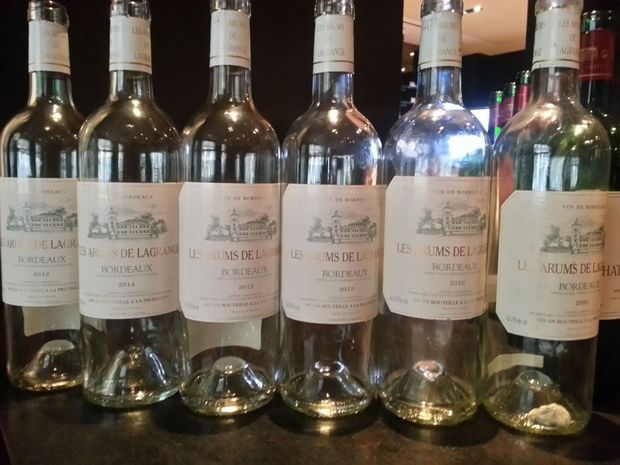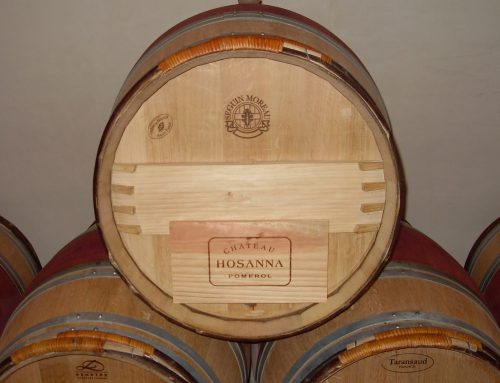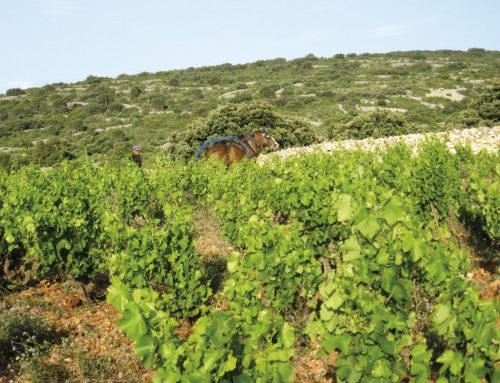Most wine consumers see red when thinking of Bordeaux.
But white is a more tranquil color. Not the sweet white of Sauternes or Barsac, but the dry, white wines of Medoc, the esteemed area known as the Left Bank.
Bordeaux is divided by two rivers, the Dordogne and Garonne. On the Right Bank, lies the renowned Saint Emilion and Pomerol appellations. The larger Left Bank is home to the 61 chateaux, whose red wines were classified in 1855, from First to Fifth Growths, along with the sweet wines of Sauternes and Barsac. I think, it’s this lack of historical recognition that has made Bordeaux’s dry white wines an afterthought.
Chateau Lagrange was classified a Third Growth in 1855. Its history starts in 1289 when the religious Order of the Temple had a hospital on the property. Over the centuries, the land was divided into tenant farms; owned by wealthy members of Bordeaux society and the politically powerful, who developed the vineyards and chateau.
Financial upheavals, two World Wars and the Depression withered Lagrange from 700 to 400 acres by the time the Japanese Suntory group purchase it in 1983. Using its financial strength, Suntory revived Chateau Lagrange.
Last week, winemaker and general manager Matthieu Brodes presented a selection of Chateau Lagrange’s dry white wine- labeled Les Arums de Lagrange- and red wines at Manhattan’s outstanding Ai Fiori restaurant.
Being well-acquainted with Chateau Lagrange’s red wines, I focused on the five white wines from 2005 to 2014, as this was the first vertical tasting I had of Les Arums.
As Brodes presented the butter-colored 2005 Les Arums de Lagrange, he stated it was from a discontinued blend of 60 percent sauvignon blanc, 30 percent semillon and 10 percent muscadelle. I noted its very mild fruit and vanilla aromas, as he explained it was aged in 100 percent new French oak barrels; the soft texture and fruit flavors harmonized with the aromas, and finished pleasantly.
The 2010 Les Arumsfollowed the 2005’s winemaking recipe, but its savory and attention grabbing mango-like scent and flavor nearly made me miss hearing that in 2009 Brodes began replanting the white grape vines, and added sauvignon gris to the vineyard.
As the 2012 Les Arums was poured, Bordes stated that the aging regiment was reduced to 80 percent new oak barrels for it, and the 2013. But what commanded my attention was the explosive pineapple and grapefruit aromas and flavors of the 2013 Les Arums. It is the first vintage with grapes from the new vines, and a new blend of 50 percent sauvignon blanc, 25 percent sauvignon gris, 20 percent semillon and 5 percent muscadelle. I loved inhaling and tasting the 2013 Les Arums de Lagrange.
The embryonic 2014 Les Arums released lemon-thyme and cilantro aromas and flavors from its blend of 60 percent sauvignon blanc, and 20 percent sauvignon gris and semillon, respectively, aged in 50 percent new oak barrels. Its bright acidity and harmonious fruit presages a long life with greater complexity.
Les Arums de Lagrange is perfect to accompany shell fish and poultry dishes. Think white the next time you see red.
Expect to pay about $40 for the Les Arums de Lagrange wines.
Follow John Foy on Twitter @JLFOY2









Leave A Comment